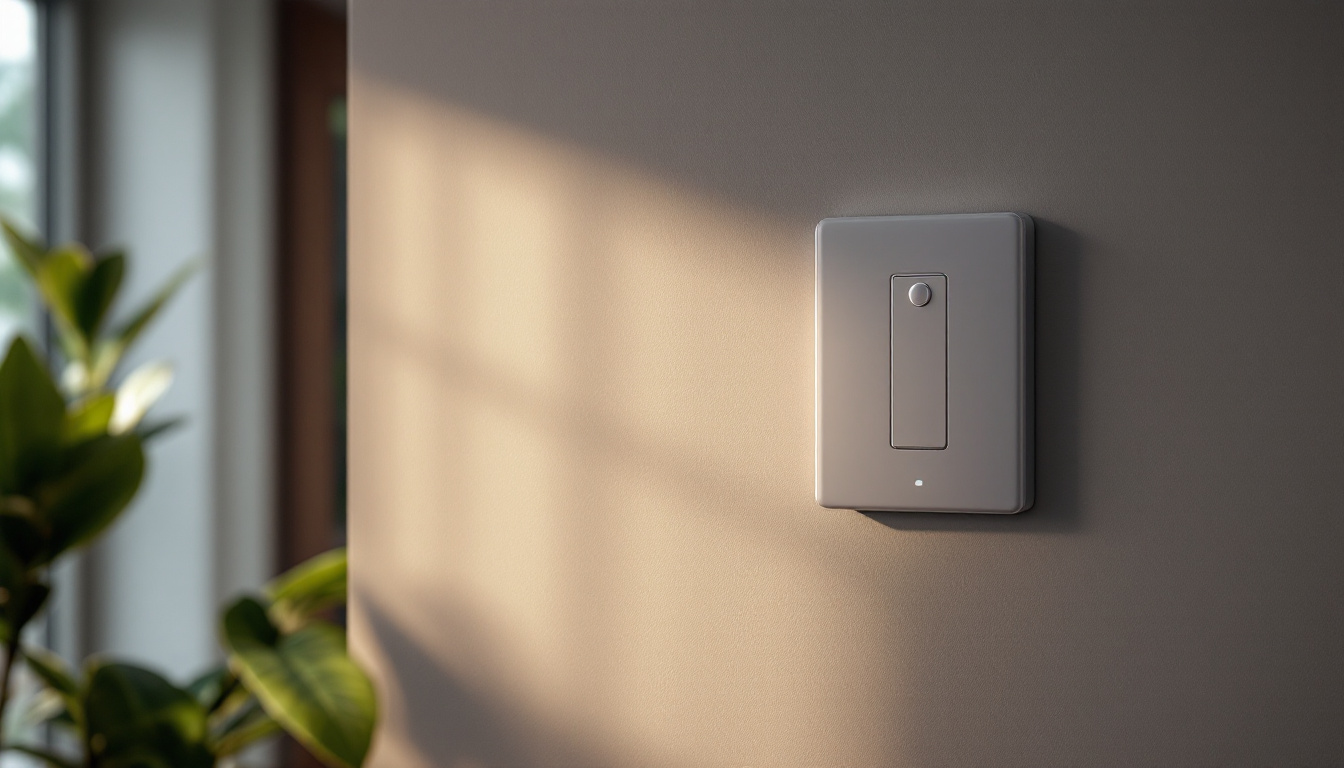
In the world of electrical installations, outlet switches play a crucial role in ensuring the functionality and safety of lighting systems. For lighting contractors, understanding the various types of outlet switches, their applications, and installation techniques is essential to delivering high-quality services to clients. This guide aims to provide a comprehensive overview of outlet switches, tailored specifically for lighting contractors.
Outlet switches are devices that control the flow of electricity to lighting fixtures and other electrical appliances. They allow users to turn lights on and off conveniently, providing both functionality and energy efficiency. Different types of outlet switches are available, each designed for specific applications and user preferences.
There are several types of outlet switches that contractors should be familiar with. Each type has its unique features and benefits:
Outlet switches are not only essential for residential lighting but also play a significant role in commercial and industrial settings. Understanding the different applications can help contractors tailor their services to meet diverse client needs.
In residential settings, outlet switches are typically installed in living rooms, bedrooms, and kitchens. They provide convenience and enhance the overall user experience. In commercial spaces, switches are often used in offices, retail stores, and warehouses, where effective lighting control can improve productivity and safety.
Moreover, the integration of outlet switches into smart home systems has revolutionized how we interact with our living spaces. smart switches can be programmed to operate on schedules, allowing homeowners to automate their lighting based on their daily routines. For instance, lights can be set to turn on at sunset or off when the last person leaves the house, contributing to energy savings and enhanced security. Additionally, many smart switches offer features such as remote access, enabling users to control their lights from anywhere, which is particularly useful for vacation homes or for monitoring security while away.
In industrial applications, outlet switches are crucial for controlling heavy machinery and ensuring safety protocols are followed. For example, emergency shut-off switches are strategically placed to provide immediate access in case of an emergency, minimizing risks and enhancing worker safety. Furthermore, in environments where different lighting levels are required for various tasks, such as in manufacturing plants or laboratories, specialized outlet switches can be employed to create tailored lighting solutions that boost efficiency and comfort for workers.
Proper installation of outlet switches is critical to ensure safety and functionality. Lighting contractors must adhere to local electrical codes and standards during installation. Here are some key techniques to consider:
Before beginning any installation, it is essential to turn off the power at the circuit breaker to prevent electrical shock. Using a voltage tester to confirm that the power is off is a best practice. Additionally, having the right tools and materials on hand, such as wire strippers, screwdrivers, and electrical tape, can streamline the installation process. It is also advisable to wear personal protective equipment, such as safety goggles and gloves, to protect against any accidental injuries. Keeping the work area tidy and free from clutter can further enhance safety and efficiency during the installation.
When wiring an outlet switch, understanding the function of each terminal is crucial. Typically, switches will have three terminals: one for the incoming power, one for the outgoing load, and a ground terminal. Properly connecting these wires is essential for the switch to operate correctly. Additionally, it is important to use the appropriate gauge of wire for the circuit to ensure that it can handle the electrical load without overheating.
For a single-pole switch, connect the black wire from the power source to one terminal and the black wire leading to the light fixture to the other terminal. The ground wire should be connected to the green grounding screw. For three-way switches, the wiring becomes more complex, involving traveler wires and a common terminal. Familiarity with wiring diagrams can greatly assist in this process. Moreover, labeling wires during disassembly can save time and reduce confusion when reassembling the switch, especially in multi-switch setups where multiple circuits may be involved.
Once the switch is installed, it is important to test its functionality. After restoring power at the circuit breaker, check that the switch operates correctly by turning the light on and off. If the switch does not function as intended, double-check the wiring connections and ensure that all terminals are securely tightened. Additionally, testing the switch with a multimeter can help verify that the voltage levels are appropriate and that the switch is functioning within expected parameters.
Furthermore, it is wise to observe the switch for any signs of overheating or unusual behavior during the initial usage period. If any irregularities are detected, it may indicate a wiring issue or a faulty switch that needs immediate attention. Regular maintenance checks on switches and outlets can also prolong their lifespan and enhance safety, ensuring that they remain in good working condition for years to come. Keeping a log of any repairs or installations can be beneficial for future reference and troubleshooting.
Selecting the appropriate outlet switch for a project involves considering various factors, including the type of lighting, the intended use of the space, and client preferences. Here are some tips to guide the selection process:
Different lighting applications may require specific types of switches. For example, a dimmer switch may be ideal for a dining area where ambiance is important, while a standard single-pole switch may suffice for a utility room. Understanding the client’s needs and the purpose of the space will help in making the right choice.
When replacing or upgrading outlet switches, it is essential to ensure compatibility with existing wiring and fixtures. This includes checking the voltage and amperage ratings of the new switch to ensure they match the requirements of the circuit. Using incompatible switches can lead to electrical issues or even safety hazards.
Clients may have specific preferences regarding the style and finish of outlet switches. Offering a variety of options, including modern, traditional, and decorative designs, can enhance client satisfaction. Additionally, discussing smart switch options can appeal to tech-savvy clients looking for convenience and energy efficiency.
Even experienced lighting contractors may encounter challenges during outlet switch installations. Being aware of these common issues can help in troubleshooting effectively:
With multiple wires involved, it is easy to become confused during installation. Contractors should take the time to label wires during removal and refer to wiring diagrams as needed. Keeping a systematic approach can minimize errors and ensure a smooth installation process.
In some installations, the physical space around the switch may be limited, making it difficult to maneuver tools or connect wires. In such cases, using compact tools and flexible wiring techniques can help overcome these challenges. Additionally, considering the placement of the switch during the planning phase can prevent issues later on.
Electrical codes and regulations can vary by location, and it is crucial for contractors to stay informed about the latest standards. Failure to comply with local codes can result in fines or unsafe installations. Regularly reviewing code updates and attending training sessions can help contractors remain compliant.
After installation, ongoing maintenance and troubleshooting are essential to ensure the longevity and functionality of outlet switches. Here are some best practices:
Encourage clients to conduct regular inspections of their outlet switches. This includes checking for signs of wear, such as discoloration or loose connections. Addressing minor issues early can prevent more significant problems down the line.
Common issues with outlet switches may include flickering lights, switches that feel warm to the touch, or switches that do not operate correctly. In such cases, it is crucial to troubleshoot systematically. Start by checking the wiring connections and ensuring that the switch is compatible with the load it controls.
As technology advances, many clients may express interest in upgrading to smart switches. These devices offer features such as remote control, scheduling, and energy monitoring. Educating clients about the benefits of smart switches can enhance their lighting experience and provide added convenience.
Outlet switches are a fundamental component of lighting systems, and understanding their types, installation techniques, and maintenance is essential for lighting contractors. By staying informed about the latest trends and technologies, contractors can provide exceptional service to their clients. Whether working on residential or commercial projects, a thorough understanding of outlet switches will enhance the quality of installations and contribute to client satisfaction.
Ultimately, the goal is to create safe, efficient, and aesthetically pleasing lighting solutions that meet the diverse needs of clients. By mastering the intricacies of outlet switches, lighting contractors can elevate their expertise and set themselves apart in a competitive industry.
Ready to enhance your lighting projects with the highest quality outlet switches? Look no further than LumenWholesale, where we provide lighting contractors with spec-grade lighting products at unbeatable wholesale prices. Say goodbye to inflated markups and hello to superior lighting solutions that meet the highest industry standards. With our hassle-free bulk buying and free shipping, you can stock up on reliable, high-performance lighting without any hidden fees. Elevate your lighting installations today and experience the best value in wholesale lighting by visiting Wholesale Lighting at the Best Value.

Discover how integrating a motion light with a switch can revolutionize your lighting projects.

Discover the top benefits of motion sensor light fixtures for lighting contractors.

Discover the latest trends in large pendant light fixtures that every lighting contractor needs to know.

Discover how 4-inch recessed lighting is revolutionizing the lighting industry with its sleek design, energy efficiency, and versatile functionality.